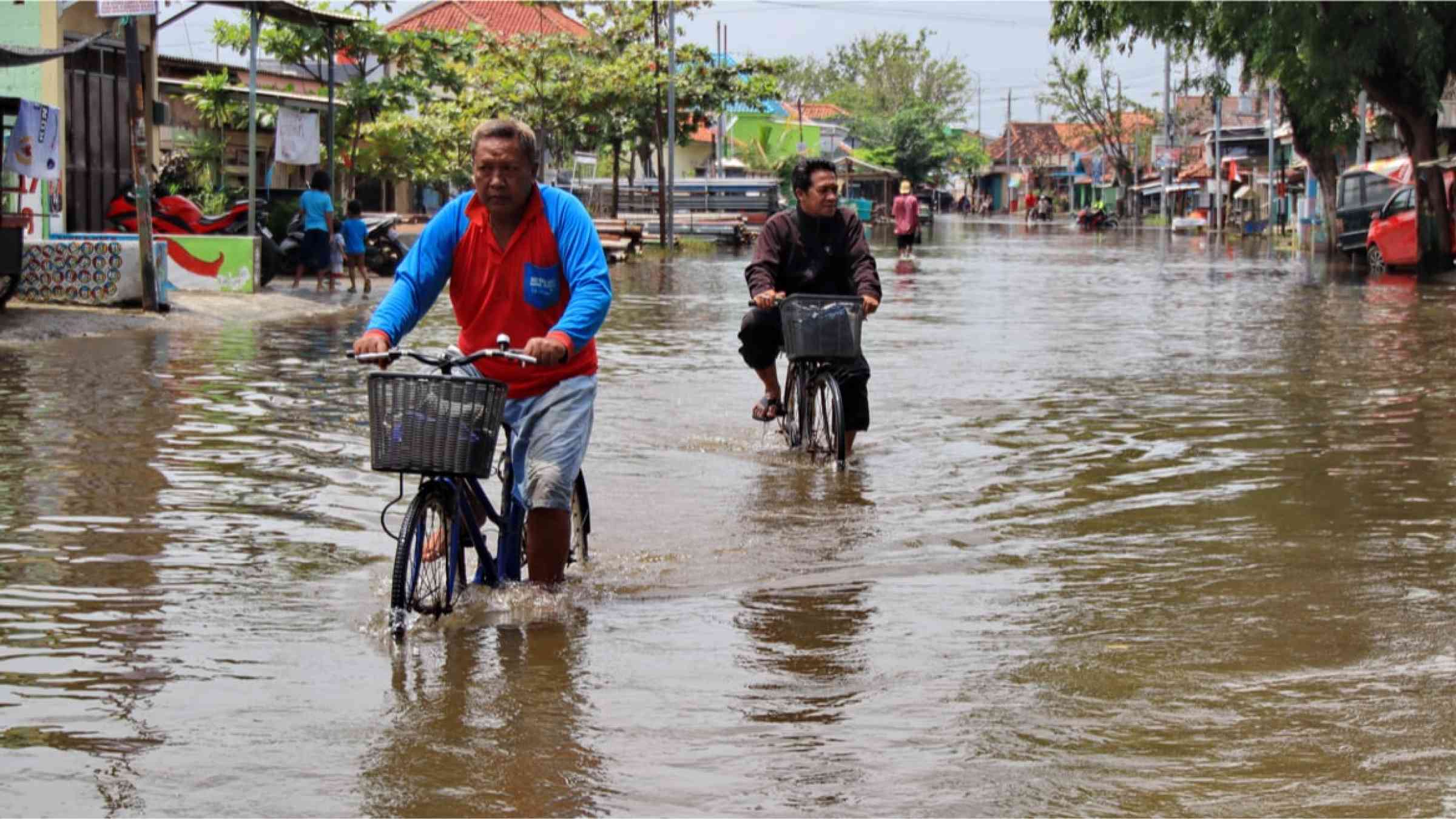Put people at heart of climate action as hazards threaten at least 70% of population of nearly a third of world's cities

- New CDP data shows 4/5 cities (80%) facing significant climate hazards, from extreme heat to floods, in 2022
- 1/4 of cities (25%) face a high-risk climate hazard expected to be more intense and frequent by 2025
- Data shows better health, more jobs, enhanced social inclusion and increased biodiversity are key benefits of people-centred city climate action
- Almost 2/3 of cities (63%) taking people-centred climate action
London - Cities should put people at the heart of their climate action, from assessment to implementation, as almost a third of them say climate hazards threaten nearly three quarters of their inhabitants. This is according to new data and analysis by CDP, the non-profit which runs the world’s environmental disclosure system for companies, cities, states and regions.
The analysis in Protecting People and the Planet is based on responses of 998 cities from across the globe to CDP-ICLEI Track in 2022, the world’s leading climate progress reporting platform for cities. It shows that cities taking at least one people-centred climate action1 - where the needs and experiences of people, especially vulnerable groups, are examined and considered from the assessment to implementation stages of action - are realising multiple additional benefits, on top of reducing emissions. For example:
- 85% of cities taking people-centred climate actions reported public health benefits, such as better air quality, physical and mental health
- 85% of such cities identified social benefits, including increased food and water security and better protection for vulnerable populations
- 84% of such cities saw economic benefits, from reduced costs to greater business innovation and improved productivity. Moreover, cities taking people-centred climate action are 5 times more likely to realise job creation as a co-benefit of climate action
- 75% of such cities reported environmental benefits, like more green space in the city or improved water and soil quality.
In a year that has seen major climate disasters on a monthly basis, the analysis shows the extent of the vulnerabilities facing cities from the increasing severity of climate change’s impacts. Four in five cities (80%) report facing significant climate hazards in 2022 - such as extreme heat (46%), heavy rainfall (36%), drought (35%) and urban flooding (33%) - while for nearly a third of cities (28%), these hazards threaten the vast majority, at least 70%, of their populations. Close to two thirds of cities (62%) expect these hazards to be more intense in future while over half (52%) anticipate them being more frequent. Moreover, a quarter (25%) are facing a high-risk hazard, such as extreme heat, that they expect to be both more intense and frequent by 2025.
With people living in cities at risk from the impacts of climate change, from floods to heatwaves, cities have identified those most exposed to climate hazards. The elderly (64% of cities), low-income households (64%), children (52%) and marginalised and minority communities (47%) are reported as the most vulnerable groups. The resources city inhabitants depend on each day are also threatened by climate change, with water supply (46% of cities), agriculture (43%) and waste management (41%) considered at greatest risk.
Maia Kutner, Interim Global Director, Cities, States and Regions at CDP, said:
“From the deadliest floods in Pakistan’s history to the worst drought across the continent of Europe in five centuries, 2022 has been another devastating year for climate change events. Every day, the world over, we hear routine phrases like “unprecedented”, “worst ever” or “first time in history” that do little to convey the staggering impact the globe’s rising temperature has on the planet and its people.
“As home to more than half the world’s population, cities find themselves sitting on the front line of climate change. They often lead the way on climate action, reporting data, setting science-based targets and making bold mitigation and adaptation plans.
“Putting people at the heart of climate action, from planning to implementation, improves lives. It unlocks social, economic and environmental benefits, enhances equity and inclusion, and ensures a just transition to a low-carbon economy. Cities that identify vulnerable groups, engage with them, and understand their needs to deliver just adaptation strategies see the clear benefits and create a sustainable future for people and the planet.”
Maryke van Staden, Director of carbonn Climate Center at ICLEI, said:
“Our future will be determined by the actions in cities and regions taken today. When local and regional governments meaningfully engage their population in accelerated climate action, the results are amplified, positively impacting multiple sectors but above all the people. This report is an important reminder of why we do this work: to sustain and improve the quality of life of our citizens.”
Michael R. Bloomberg, UN Secretary-General’s Special Envoy on Climate Ambition and Solutions and Founder of Bloomberg LP and Bloomberg Philanthropies, said:
“This report underlines the major risks cities around the world face from climate change as well as the benefits of taking action – including cleaning the air, improving public health, and expanding economic opportunity. The more cities know about those risks and benefits, and the more they engage citizens in the work they’re doing to confront the climate crisis, the faster they can make progress.”
The new data shows that close to two thirds of cities (63%) are taking at least one people-centred climate action, according to CDP’s definition. Almost half of cities (45%) are engaging civil society in their climate action planning while almost two fifths (39%) consider vulnerable populations in their climate risk and vulnerability assessment (CRVA).
The report also examines the factors which support and hinder cities from adapting to climate change. Community engagement, access to education and political engagement are key enablers. Increased support from national governments also helps cities meet their emissions reduction targets, as one in five cities say their target depends on decarbonising the electricity grid, national funding for infrastructure and national legislation. Over half of cities (57%) report factors challenging their ability to take climate action, with the most common being budgetary capacity (25%).
CDP is calling for cities to take the below actions in the development and execution of their climate action:
- Set science-based targets, develop a climate action plan to support their implementation and undertake a CRVA to identify climate risks and create an adaptation plan to manage them. Representing a city’s fair and proportionate share of global emissions reductions, having a science-based target is one of the most effective actions cities can take to rapidly cut emissions in line with limiting the global temperature rise to 1.5°C. Joining the UN-backed campaigns Race to Zero, committing to interim and net-zero targets by 2050, and Race to Resilience, to build resilience and adapt to the effects of climate change are key steps
- Identify who to work with to deliver tangible and effective climate action. Cities should work closely with national and regional governments, and the private sector, to deliver mitigation and adaptation actions. They can use their convening power, such as city-business climate alliances, to include multiple stakeholders into decision-making processes. Governments must increase support and investment for cities to help them meet their emissions reduction targets and take action. Deeper investment in sustainable initiatives and infrastructure, and following through on environmental legislation and pledges, is needed
- Put people at the heart of climate action. By putting people, especially vulnerable groups, at the heart of decisions on climate action - from assessment to implementation - lives will be improved, more co-benefits unlocked and better decisions for the future growth and equity of cities made. For example, cities can:
- Undertake a CRVA that considers vulnerable populations
- Have an adaptation goal or target that addresses key issues such as energy poverty, water and food, and air quality
- Use their emissions inventory to better understand where, and to whom, emissions reduction measures should be directed
- Consult civil society in climate action planning and develop plans with a collaborative approach
- Understand local experiences and needs by actively bringing people into decision-making processes through engagement and education
- Use their formal and soft powers to advocate for equitable and inclusive climate action to meet the needs of people.
View interactive data on the top 20 most frequently cited co-benefits of adaptation and mitigation measures, based on the data used in this report. All public data on cities, states and regions is available at CDP's Open Data Portal.
Explore further
Also featured on
Is this page useful?
Yes No Report an issue on this pageThank you. If you have 2 minutes, we would benefit from additional feedback (link opens in a new window).
